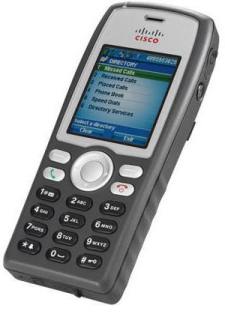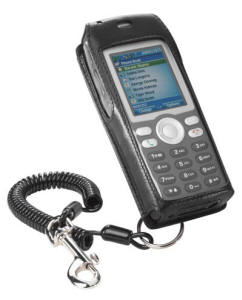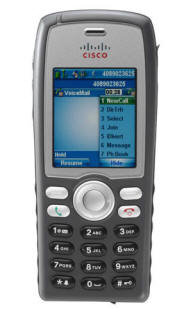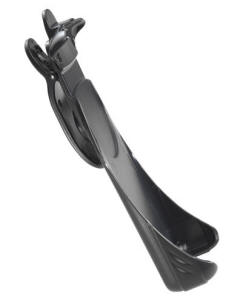
Cisco Unified Wireless IP Phone 7925G
Enhanced User Experience and Added Resiliency

Sorry, this product is no longer available, replaced by Cisco Unified IP Conference Phone 8821.
Click here for more options and pricing!
Please Note: All Prices are Inclusive of GST
Cisco Unified Wireless IP Phone 7925G:
Enhance the user experience and personal freedom with support for Bluetooth. Increase business continuity by taking advantage of a new ruggedized industrial design. The Cisco Unified Wireless IP Phone 7925G for mobile professionals extends the functionality of the existing Cisco Unified Wireless IP Phone 7921G with the following new features:
- Support for Bluetooth v2.0 headset profiles gives you more freedom
- Hermetically sealed phone/display is IP54 rated, protects against dust, liquids, and moist wipes, and is ideal for deployment in more demanding environments
- Ruggedized industrial design is compliant with military 810F standard and includes a rubber casing to shield the phone from damage caused by drops and shocks
- A more compact form factor gives you an IP phone that is easier to hold
Product Overview
The Cisco® Unified Communications Solutions unify voice, video, data, and mobile applications on fixed and mobile networks, delivering a media-rich collaboration experience across business, government agency, and institutional workspaces. These applications use the network as the platform to enhance comparative advantage by accelerating decision time and reducing transaction time. The security, resilience, and scalability of the network enable users in any workspace to easily connect anywhere, anytime, and anyplace, using any media, device or operating system. Cisco Unified Communications is part of a comprehensive solution that includes network infrastructure, security, wireless, management applications, lifecycle services, flexible deployment and outsourced management options, and third-party applications.
The power of the Cisco Unified Communications family of products extends throughout the enterprise, delivering a powerful, converged wireless solution with intelligent wireless infrastructure and an innovative new product: the new Cisco Unified Wireless IP Phone 7925G. This device delivers on-campus mobility to users using voice over wireless LAN (VoWLAN).
Features and Benefits:
The Cisco Unified Wireless IP Phone 7925G is designed for users in rigorous workspaces as well as general office environments. It supports a wide range of features for enhanced voice communications, quality of service (QoS), and security. Some of the main benefits and highlights are listed here:
- IEEE 802.11 a/b/g radio
- Two-inch color display
- Bluetooth 2.0 support with Enhanced Data Rate (EDR)
- IP54 rated for protection against dust and splashing water
- MIL-STD-810F standard for shock resistance
- Long battery life (up to 240 hours of standby time or 13 hours of talk time)
- Built-in speakerphone for hands-free operation
- Exceptional voice quality with support for wideband audio
- Support for a wide range of applications through XML
| Feature | Description |
|---|---|
| Features |
|
| Buttons |
|
| Display | 2 in. (5 cm) color display with 176 x 220 pixel resolution |
| LED | Ring, message waiting, and charging LED |
| Protocol support |
|
| Cisco Compatible Extension | Cisco Compatible Extension Version 4 |
| Extensible language | XML eXtensible Markup Language |
| Codec support | G.711a, G.711u, G.729a, G.729ab, G.722, and iLBC audio compression codecs |
| Configuration options |
|
| Network features |
|
| Security features |
|
| Provisioning and management |
|
| Deployment tools | Integrated site survey tool |
| Language support | Bulgarian, Catalan, Chinese, Croatian, Czech, Danish, Dutch, English, Finnish, French, German, Greek, Hungarian, Italian, Japanese, Korean, Norwegian, Polish, Portuguese, Romanian, Russian, Serbian, Slovak, Slovenian, Spanish, and Swedish |
Technical Specifications:



| Cisco Unified Wireless IP Phones 7925G Specification | |||
|---|---|---|---|
| Product Specifications | |||
| Dimensions (H x W x D) | 5.0 x 2.0 x 0.8 in. (12.7 x 5.2 x 2.0 cm) | ||
| Weight | 3.5 lb (1.6 kg) | ||
| Battery |
|
||
| Input Power |
|
||
| Vibration | 1.5 Grms maximum, 0.1 in. (2.5 mm) double amplitude at 0.887 octaves per minute from 5-500-5 Hz sweep, and 10-minute dwell on three major peaks in each of the three major mutually perpendicular axes | ||
| Thermal shock | -22°F (-30°C) 24 hours; 158°F (70°C) 24 hours | ||
| Altitude | Certified for operation: 0 to 6500 ft (0 to 2 km) | ||
| Endurance |
|
||
| Headset |
|
||
| Connector | Mini USB | ||
| Temperature Ratings | |||
| Operating temperature | 32 to 104°F (0 to 40°C) | ||
| Relative humidity | 10 to 95% (noncondensing) | ||
| Storage temperature | -22 to 140°F (-30 to 60°C) | ||
| Certification | |||
| Safety |
|
||
| Electromagnetic compatibility (EMC) |
|
||
| Telecom |
|
||
| Radio |
|
||
| RF exposure |
|
||
| Wireless Characteristics | |||
| Protocol | IEEE 802.11a, 802.11b, and 802.11g | ||
| Frequency band and operating channels | FCC: (-A)
ETSI: (-E)
Japan: (-P)
Rest of World: (-W)
|
||
| Support mode |
|
||
| Data rates | IEEE 802.11a: 6, 9, 12, 18, 24, 36, 48, and 54 Mbps |
IEEE 802.11b: 1, 2, 5.5, and 11 Mbps |
IEEE 802.11g: 6, 9, 12, 18, 24, 36, 48, and 54 Mbps |
| Nonoverlapping channels |
|
||
| Wireless modulation |
|
||
| Receiver sensitivity (typical) | IEEE 802.11a:
|
IEEE 802.11b:
|
v802.11g:
|
| Transmitter output power | IEEE 802.11a OFDM:
|
IEEE 802.11b CCK:
|
IEEE 802.11g OFDM:
|
| Range (stated ranges are from measured open-site range testing) |
IEEE 802.11a:
|
IEEE 802.11b:
|
IEEE 802.11g:
|
| Ranges and actual throughput vary based on numerous environmental factors so individual performance may differ. | |||
| Access point support |
|
Required versions:
Software access points (autonomous) |
|
| Wireless security | Authentication:
|
Encryption:
|
|
| QoS | IEEE 802.11e and Wi-Fi Multimedia (WMM)
|
||
| Radar detection | Dynamic frequency selection (DFS) and transmit power control (TPC) according to IEEE 802.11h | ||
| Power save mode |
|
||
Documentation:
Download the Cisco Unified Wireless IP Phone 7925G Datasheet (PDF).

